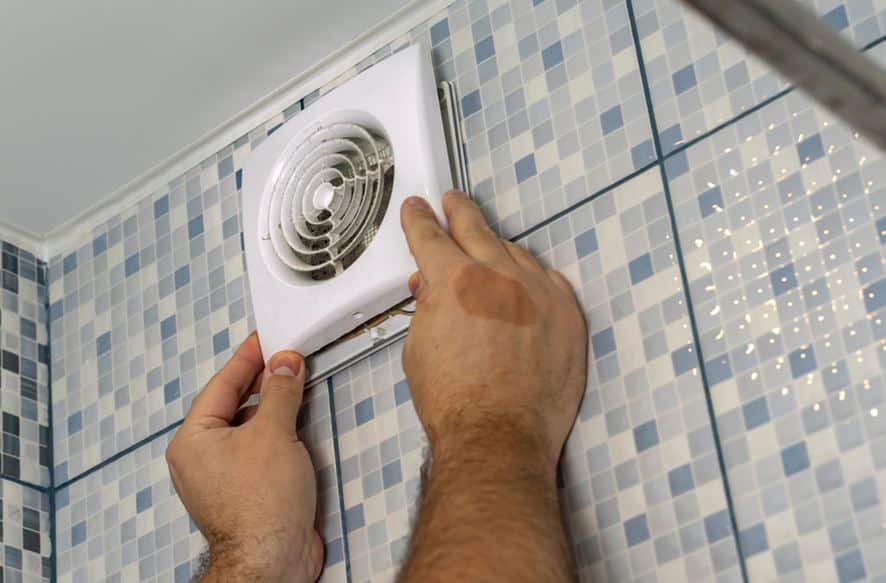Bathroom
Get to Know the Basics of Bathroom Ventilation for your Next Renovation

When updating a bathroom, one of the things you should never forget is ensuring that there’s adequate ventilation. Without it, excess moisture can build up on walls, mirrors, and ceilings, creating an environment where mold can grow. Humidity can also cause wood to rot.
Thankfully, there’s a simple solution: bathroom ventilation. In this blog, we’ll share some ways you can ensure that excess moisture won’t build up in your house. We’ll also share a few common mistakes people make when it comes to bathroom ventilation. To improve climate and air quality in your residence, Visit TerraBloom.
[lwptoc]
Signs that your bathroom has ventilation issues
In most bathroom renovation budget, people focus on making cosmetic updates, such as replacing the floor tiles or the fixtures. However, you should also check if the bathroom has adequate ventilation. Here are some signs that you might need to make some improvements:
- Excess moisture: In bathrooms with poor ventilation, you’ll likely notice that the bathroom takes a long time to dry. For example, the shower area remains damp for an hour or more after use. Mirrors or windows also remain foggy for long periods.
- Mold: The most common issue for bathrooms with poor ventilation is mold formation on walls and tiling. This is a huge cause for alarm since mold can trigger allergic reactions and cause respiratory issues.
- Stuffiness: If you experience difficulty breathing inside a bathroom, then that’s a sign that the room has poor air circulation.
- Stained ceilings: Check the ceiling for any water stains. If that is the case, that means moist air lingers in the bathroom and may spread throughout the house.
- Lingering smells: If smells from the toilet linger for 30 minutes or more, that’s a sign that you have a poorly ventilated bathroom.
Types of bathroom ventilation
Bathroom window
Opening a bathroom window is the easiest way to let humid air out of the room. If you’re concerned about privacy, you can install clerestory windows or skylights. These options are great at ensuring that moist air escapes from the room while also letting in natural light. A skilled building designer can help you decide where best to place the windows.
Bathroom vent fans
Opening a bathroom window is the first step to ensuring there’s proper ventilation, but there may be cases when the room still feels stuffy even with an opened window. In winter, opening a bathroom window may also cause some discomfort. For these reasons, it’s important to consider installing bathroom vent fans.
Bathroom fans pull air from the room and vent them outside. Some of them vent out through a duct running up to the roof, though there are also some exhaust fans that vent the fan through the wall without the need for additional ductwork.
Here are some of your options:
- Axial fans: Axial fans are ideal for bathrooms that are located within 1.5 meters of an external wall.
- Centrifugal fans: Centrifugal fans are ideal for bathrooms that are 1.5 meters away from an external wall. But while they’re powerful enough to move air over greater distances, they can be a little noisier.
- Inline fans: Inline fans are installed inside the ducts. They can move air over distances of about 40 meters. This is ideal if your bathroom is far from an external wall.
Common bathroom ventilation mistakes
1. Not reviewing local regulations on bathroom ventilation
Every town or city has local building regulations on bathroom ventilation. Check with your city or county planning and permitting department to learn the local code requirements on bathroom fans.
Typically, you’ll need to make sure that there’s a full exchange of air at least five times per hour. To do this, choose a bathroom fan with a cubic-feet-per-minute (CFM) capacity that’s the same as your bathroom’s square footage.
2. Assuming that installing a bathroom vent fan is a DIY project
If you’re simply switching an old bathroom vent fan for a newer model, then you can consider it as a DIY project. However, installing vents and setting up new electrical wiring requires the expertise of a professional. They can make sure that the exhaust fan is venting humid air outside, not to the attic or the roof.
3. Placing the bathroom fan near an AC vent
As much as possible, for a new bathroom renovation design, you must install an exhaust fan near the tub or shower. However, make sure that there won’t be bathroom vents running next to the heating/air conditioning vent, as this may disrupt the bathroom fan’s intake of humid air. You may opt to move your bathroom vent fan farther away to avoid this situation.
Plan your bathroom renovation now
Don’t let poor ventilation ruin your dream space. By ensuring that you have a fully functional ventilation system, you can protect your home from mold and rot. Keep this in mind when planning your next bathroom renovation.












